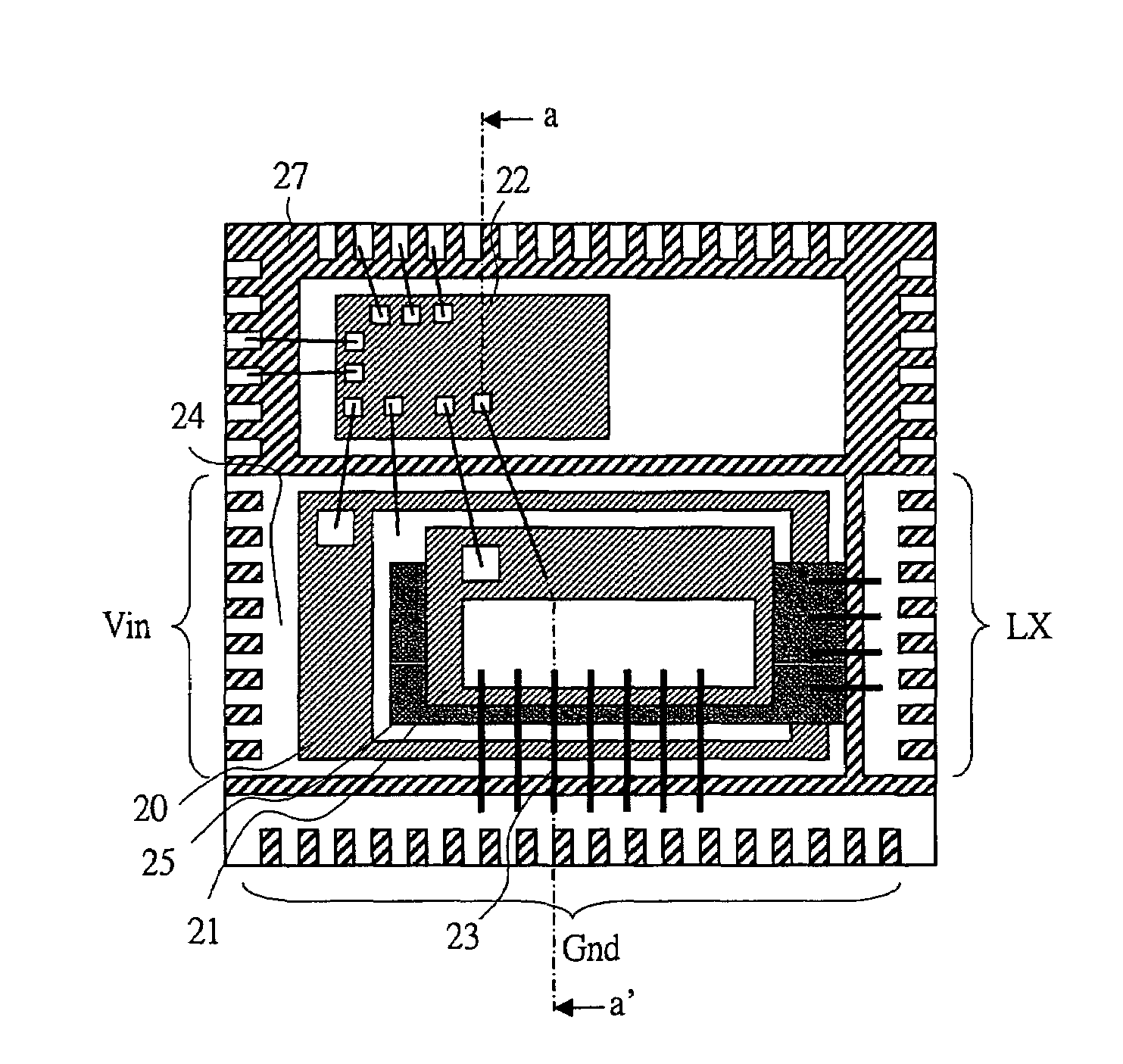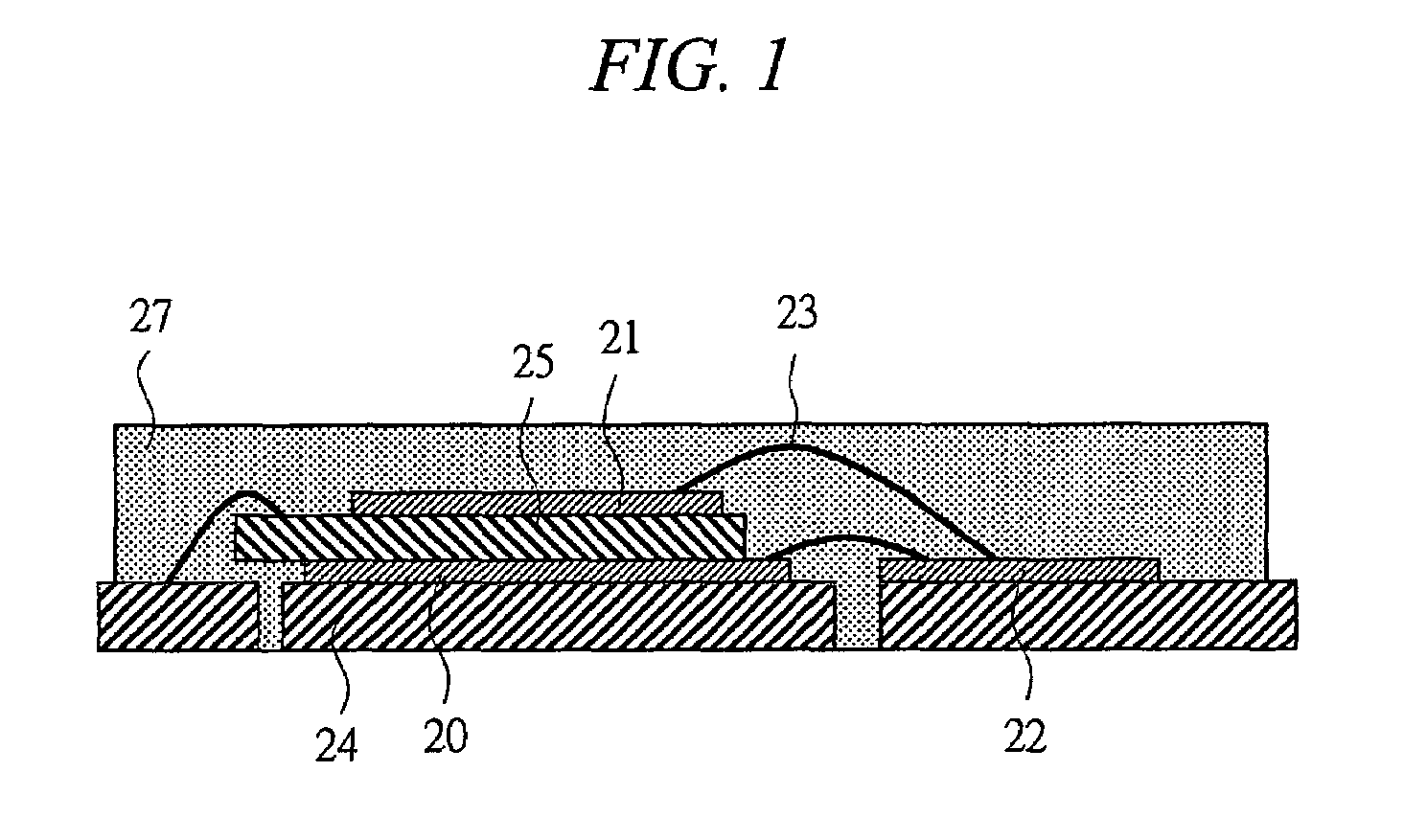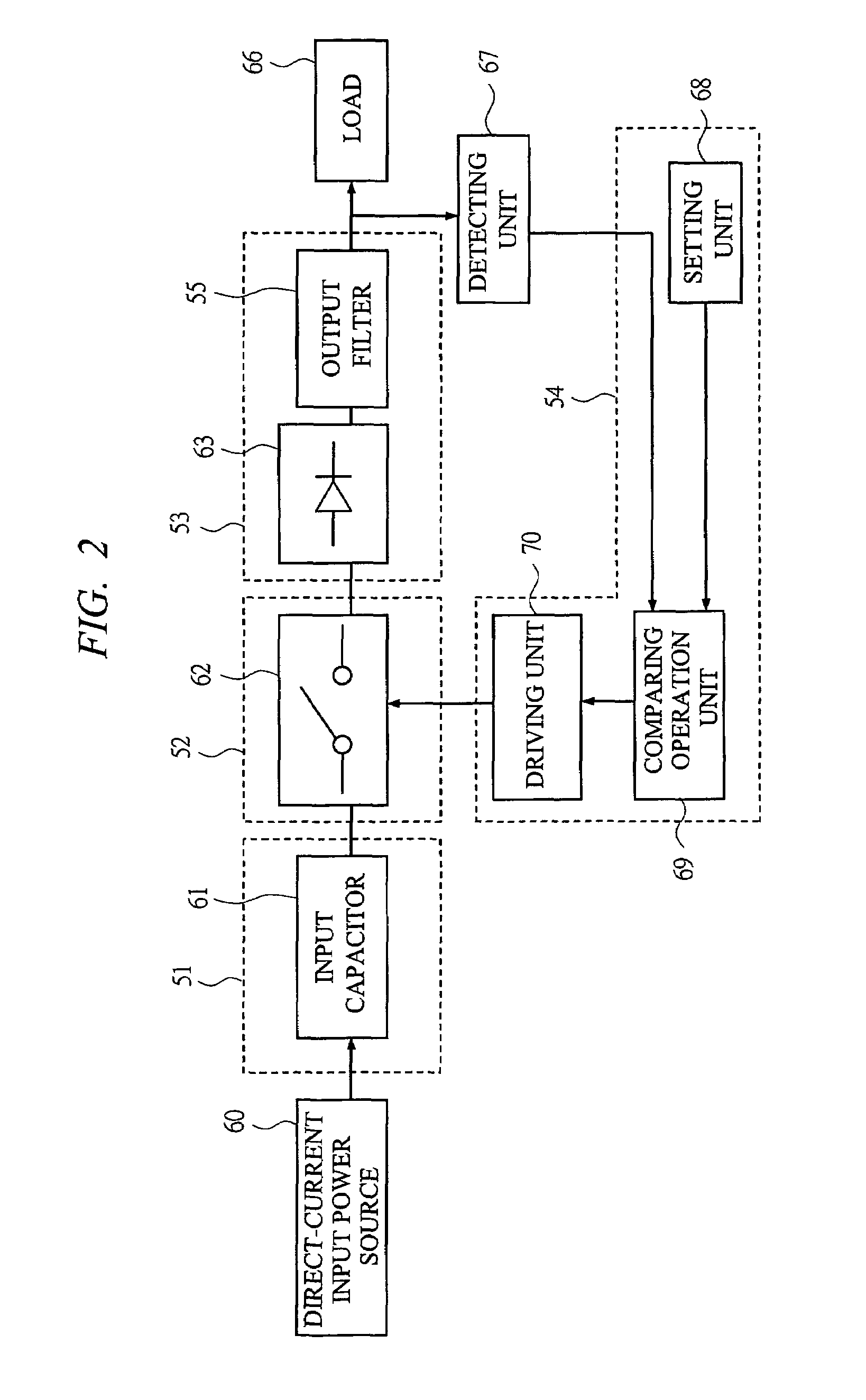Semiconductor device and power supply device using the same
a technology of semiconductor devices and power supply devices, applied in the direction of dc-dc conversion, solid-state devices, power electronics conversion efficiency, etc., can solve the problems of large inductance, reduce the inductance of the main circuit of the semiconductor device, reduce the loss of power sources, and reduce voltage spikes
- Summary
- Abstract
- Description
- Claims
- Application Information
AI Technical Summary
Benefits of technology
Problems solved by technology
Method used
Image
Examples
first embodiment
[0053]By using FIG. 12 and FIG. 1, a semiconductor device according to a first embodiment of the present invention is described. As shown in FIG. 12, the semiconductor device according to the present embodiment includes the rectification MOSFET 20, the commutation MOSFET 21, and the driving Integrated Circuit (IC) 22 that drives these MOSFETs. The rectification MOSFET 20, a metal plate (conductive member) 25, and the commutation MOSFET 21 are laminated. Through the wire bondings 23, the driving IC 22, the rectification MOSFET 20, and the commutation MOSFET 21 are connected. The rectification MOSFET 20 and a lead frame that leads to output terminals LX are connected to the metal plate through the wire bondings. The commutation MOSFET 21 and a lead frame that leads to ground terminals Gnd are connected through the wire bondings. The terminals of the main circuit and the terminals of the driving IC are placed on the same plane. This is because since the semiconductor device according t...
second embodiment
[0056]Next, an embodiment in which a stress of the metal plate 25 is mitigated is described. In a step of manufacturing the semiconductor device according to the present invention, a high-temperature process called a reflow is involved. At a time of performing the reflow, since a coefficient of thermal expansion of the semiconductor is different from that of the metal, there are problems of, for example, an occurrence of crack in a semiconductor chip. In the embodiment of FIG. 14, a plurality of trenches 46 are provided in the metal plate 25, thereby making it possible to mitigate the stress caused at the time of performing the reflow.
third embodiment
[0057]Next, another embodiment in which the inductance can be further reduced as compared with the first embodiment is described. In FIG. 12, the wire bondings are used for connections from the metal plate 25 to the lead frame 24 and from the commutation MOSFET 21 to the ground terminals. However, there is a problem in which the inductance of the wire bonding is larger than that of the metal plate.
[0058]FIG. 15 depicts an embodiment in which the metal plate 25 and a metal plate 28 are used for connections from the metal plate 25 to the lead frame 24 and from the commutation MOSFET 21 to the ground terminals, whereby as compared with the first embodiment, the inductance of the main circuit can be significantly reduced. FIG. 16 is a section view of FIG. 15 (taken along line a-a′).
[0059]In the present embodiment, the metal plates are used for connections from the metal plate 25 to the lead frame 24 and from the commutation MOSFET 21 to the ground terminals. Alternatively, the metal pla...
PUM
 Login to View More
Login to View More Abstract
Description
Claims
Application Information
 Login to View More
Login to View More - R&D
- Intellectual Property
- Life Sciences
- Materials
- Tech Scout
- Unparalleled Data Quality
- Higher Quality Content
- 60% Fewer Hallucinations
Browse by: Latest US Patents, China's latest patents, Technical Efficacy Thesaurus, Application Domain, Technology Topic, Popular Technical Reports.
© 2025 PatSnap. All rights reserved.Legal|Privacy policy|Modern Slavery Act Transparency Statement|Sitemap|About US| Contact US: help@patsnap.com



